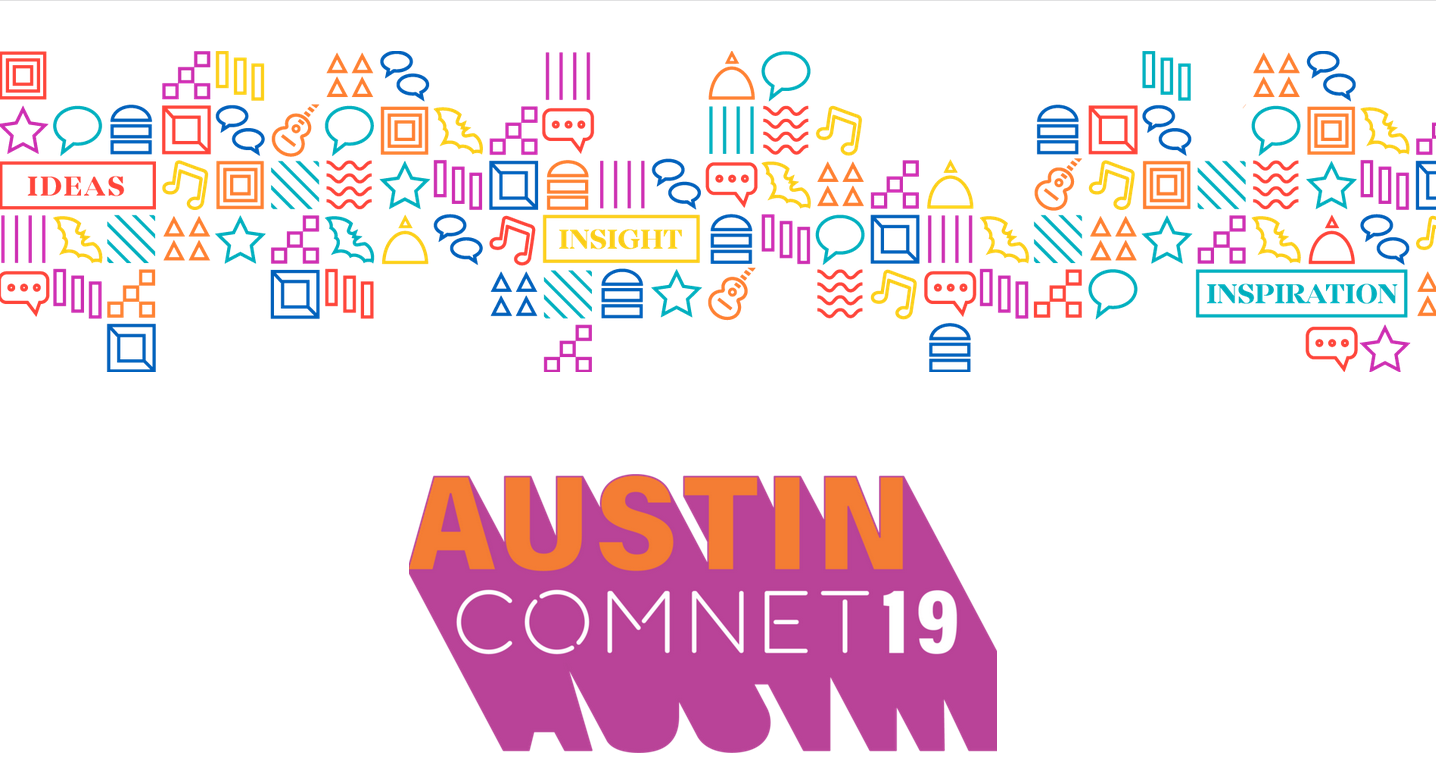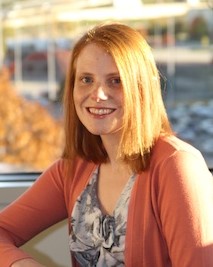By Karen Race
Forty years ago or so, Frank Karel was the newly-appointed communications lead at the Robert Wood Johnson Foundation. As the first person to have this role, Karel felt a bit lost. He knew public relations, but he did not know the philanthropic sector. So, he did what any good communicator would do: he picked up the phone. He called a colleague at Rockefeller Foundation and asked him to meet for lunch. The result of this lunch conversation was the recognition that there needed to be a network for those working in the field philanthropic communications.
In early October 2019, more than 900 communicators from the non-profit and philanthropy world came together for three days to share ideas, build relationships and advance their work at ComNet19 in Austin, TX. ComNet is the annual gathering of the Communications Network, the membership organization that sprouted from Frank Karel’s lunch meeting. It is currently made up of over 1,600 communicators from foundations, nonprofit organizations, and consultancies working in the social sector all over the world.
This was my second year as an attendee at ComNet, and I decided to take a step deeper into the experience by signing on as a Community Ambassador. As one of 49 Ambassadors, I was assigned a group of 20 fellow ComNet attendees by the Network. The Ambassadors took on a leadership role to support the Network’s goal of creating a space for attendees to build stronger ties and deeper connections. My task was essentially to create a smaller community within the larger one of ComNet.
Making connection, exchanging ideas, building relationships: these are all phrases that I am sure we have all heard variations of at most conferences. However, I was genuinely impressed at how dedicated ComNet was to this purpose. Here is how they did it:
Create community at every level
When attending a big conference or event, the phrase “alone, together” sometimes crosses my mind. It always feels a bit strange to be surrounded by hundreds of people, yet still feeling very much by yourself. Even at a conference for professional communicators (i.e. lots of friendly extroverts) this can be a tough proposition.
By assigning each ComNet attendee to a Community Group, ComNet removed the possibility that you could attend the event and be alone in a sea of people. A group of 900? Intimidating. A group of 20? Not so much. ComNet hosted calls for the Community Ambassadors where we not only learned more about the expectations of the role, but exchanged ideas on how we define community. Each Community Ambassador then got in touch with their group prior to the conference to begin a conversation over e-mail, and to make plans about where to meet up for the opening reception. As a result, there was a nice sense of “putting a face to a name” when we all met up in person in Austin.
Don’t make it awkward: provide an inclusive framework with clear boundaries
I recently read an interesting article about how communities are made up of two types of participants: consumers or co-creators. Although these “types” are polarized examples, most people will fall closer to one side of the spectrum in any given community. ComNet recognized that attendees can become co-creators by offering a thoughtful framework for participation, and then letting each participant decide at what level they wanted to be involved.
ComNet stated clearly its commitment to inclusion for all people, and encouraged all attendees to add a pronoun button (supplied by ComNet) to their name badge.
In addition, since this was a conference for a cross-section of nonprofits, foundations and consultants, ComNet’s Solicitation Policy was important. By breaking it down to a simple list of DOs and DON’Ts, ComNet was able to set the tone in a simple but effective way.
Define your values and celebrate them
The Communications Network states that it is guided by three core values: community, learning, and leadership. It adds that: “Leadership is an activity, not a role.”
The Network created Leadership Coins, and provided its board members, Community Ambassadors, and members of the Host Committee with a limited number of them to hand out to conference-goers who they felt were exemplifying the core values of the Network. It could look like someone asking a great question in a session, or seeing someone reach out and greet a person who may look uncomfortable joining the group on their own. When awarded, the receiver was encouraged to post a photo of themselves with the coin on the popular* conference app.
*(Seriously, if there is a busier conference app than one for professional communicators, I cannot imagine it.)
By clearly defining its values and giving attendees the opportunity to exemplify those values in an intentional way, ComNet defined what it wants its community to be.
Remind one another of our common purpose
There were many different types of organizations and work represented at ComNet. The same isolation that Frank Karel felt in his new role at RWJF four decades ago is still felt by many in the nonprofit/philanthropy field today, despite all of our access to technology and membership associations. Perhaps even more than that, it can be hard to lift your head in the fast-paced world that seems even more pronounced in the field of communications.
ComNet welcomed amazing keynote speakers, all of whom connected the work of communicators to the larger purpose of creating a better world in eloquent ways. Janet Mock spoke about the importance of making Trans people visible in media, and how effective communications has helped increase understanding. Desmond Meade told us how he used his voice as a formerly homeless returning citizen to lift the stories of millions of citizens who have had their voices taken away after serving a prison sentence and losing their voting rights. Trabian Shorters’ asset-framing for communicators reminds us of the power in shaping a narrative based on the contributions of a community instead of its deficits. And Stacey Abrams implored us as communicators to “be honest, be present, and be an advocate” in our roles as “intercessors between those who have no voice and those who can’t shut up.”
Keep it simple, but go all in
Community begins with a simple gesture of connection. The desire to belong to a community where one did not yet exist is what led Frank Karel to pick up the phone 40 years ago and it is what leads us to volunteer, join groups, attend conferences, or simply reach out to others today. ComNet was a good example that creating and supporting an inclusive community does not have to be complicated, but it does have to be intentional. Keep it simple – and commit.
Karen Race is Grants & Communications Manager at Claneil Foundation in Plymouth Meeting, PA. Prior to joining Claneil, Karen held positions at Drexel University’s Westphal College of Media Arts and Design, and Eisenhower Fellowships. As a freelance writer, Karen's work has appeared in such publications as the Philadelphia Social Innovations Journal, and she served as correspondent for the News of Delaware County, where she covered local government and the 2008 presidential election. Karen began her career at the League of Conservation Voters Education Fund, and in 2012 was selected as an Emerging Leader by the United Way of Greater Philadelphia and Southern New Jersey.


